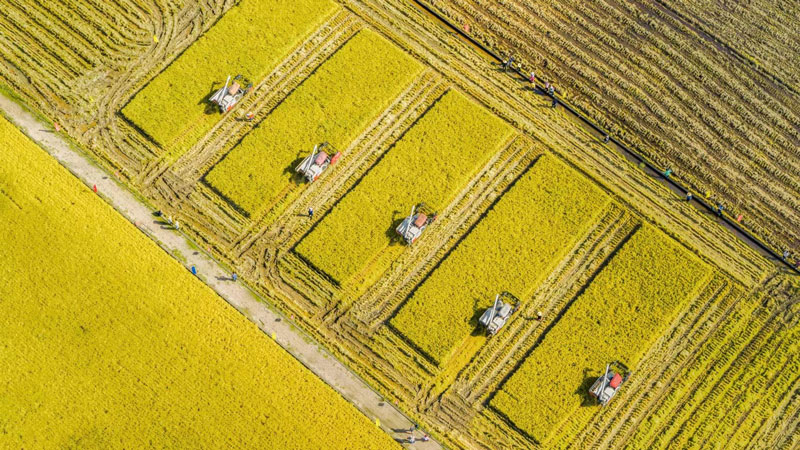Booming bamboo industry mirrors China's sustained green efforts

This undated file photo shows bamboo products of Nanchang Sanyou Eco Technology Co., Ltd. in Nanchang, east China's Jiangxi Province. (Xinhua)
NANCHANG, Dec. 29 (Xinhua) -- Bamboo utensils have been the main products of Okuda Shizuko's company in Nanchang, east China's Jiangxi Province, for nearly three decades.
Bullish on the potential of the industry under China's green initiative, Shizuko injected several millions of yuan this year to upgrade from traditional assembly line production to intelligent production lines.
Growing up in a mixed-race family, Shizuko stayed in China until she was 20 before leaving for Japan for further studies. Yet the childhood memory left an indelible impression on her. In the 1990s, she returned to Nanchang and founded Nanchang Sanyou Eco Technology Co., Ltd., which specializes in eco-friendly products such as bamboo and wood utensils. The enterprise has been in operation for 29 years.
"Today, about 80 percent of our products are sold to Japan, Europe, and the United States," said Shizuko. She added that the company's smooth operation mirrors the sustained efforts China has been making over the past decades to further green economic development and upgrade the manufacturing industry.
China has the most abundant bamboo resources in the world. Its bamboo forest area and output account for one-fourth and one-third of the world's total respectively. The country's bamboo forest area, accumulation, output, and exports are among the top in the world.
At the Second Global Bamboo and Rattan Congress held in November, the Chinese government and the International Bamboo and Rattan Organization jointly launched the Bamboo as a Substitute for Plastic Initiative to encourage countries to reduce plastic pollution, respond to climate change and accelerate the implementation of the UN 2030 Agenda for Sustainable Development.
To Shizuko, as China pays more attention to ecological protection, residents' environmental protection awareness has been greatly enhanced, thus giving the industry promising development prospects.

This undated file photo shows factory buildings of Nanchang Sanyou Eco Technology Co., Ltd. in Nanchang, east China's Jiangxi Province. (Xinhua)
"We plan to increase the research, development, and production of bamboo products such as spoons, bowls, and chopsticks next year and continue to upgrade the production lines to improve efficiency and expand the domestic market share," she said.
Bamboo and rattan have the potential to develop a green economy, address climate change, build disaster-resilient infrastructure, alleviate poverty, revitalize rural areas and protect the environment, according to the UN Environment Programme World Conservation Monitoring Centre.
It further notes that bamboo's lightweight and linear-splitting nature makes it comparatively easier to process than timber, giving farmers, many of whom are women, opportunities to engage in the initial processing and further increase their share in value addition.
At Shizuko's company, about 80 percent of the employees are women. She also hires some people with disabilities.
"Many of our employees have been working for us for more than 20 years and have a strong sense of belonging," said Shizuko.
Yuan Shaoqing, a deaf-mute employee who has been with the company for 27 years, said in sign language that working here makes her feel at ease, and the company provides a good platform for her to achieve self-worth and grow continuously at work.
Shizuko said that the city of Nanchang is no longer what it was in her childhood memory, with high-rises and avenues replacing old narrow blocks. Yet the lush mountains are always there, and she often visits with friends in her spare time.
"I hope I can scale Huangshan Mountain and Taishan Mountain next year, and my family in Japan can also come and appreciate the magnificent scenery of China," she said.
Photos
Related Stories
- Cambodian officials, experts hail China's contribution to global green development
- Trailblazing green development while going carbon neutral
- China works vigorously to advance green transportation
- Chinese vice premier stresses green, low-carbon energy transition
- "City of future" fosters low-carbon growth for green development
- China contributes to global sustainable development through bamboo for plastic initiative
Copyright © 2022 People's Daily Online. All Rights Reserved.









